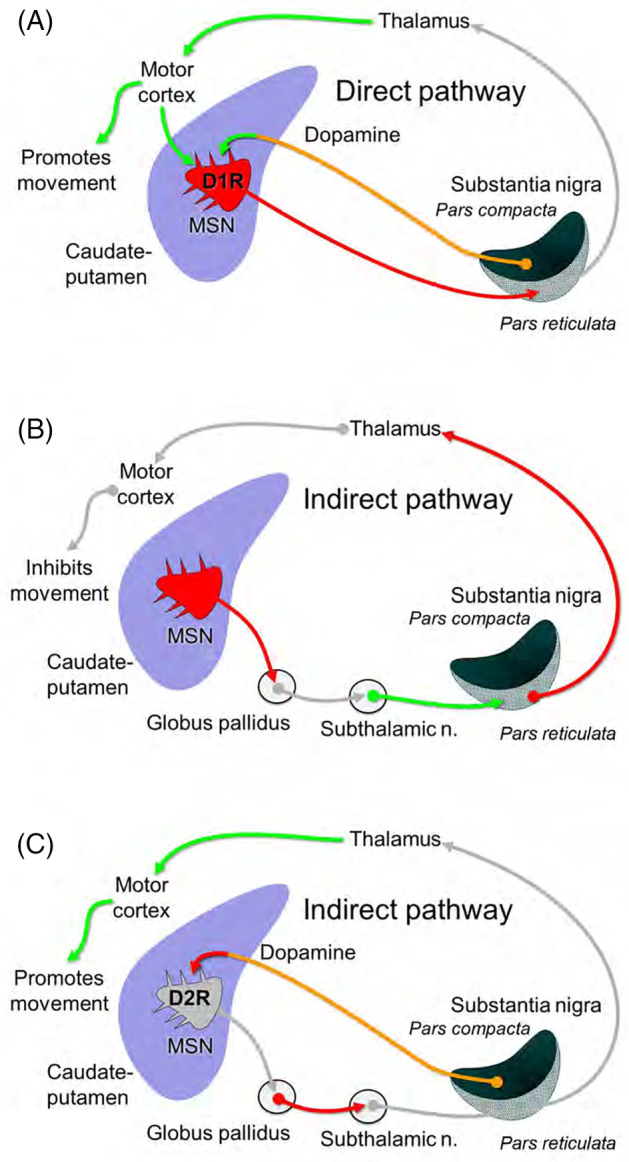FIGURE 1.

Thalamo‐cortico‐basal ganglia circuits involved in movement disorders. In the direct pathway of the basal nuclei (A), dopaminergic innervation of the caudate/putamen from the SNc increases inhibition of the SNr (and EPN not shown) by activating D1R on GABAergic MSN. This releases the thalamus from tonic inhibition of these nuclei. Loss of this inhibition increases the excitatory feedback from the thalamus to the motor cortex and caudate/putamen, thus promoting movement. The indirect pathway (B) has the opposite effect. MSN inhibit GABAergic neurons in the GP. This releases the subthalamic nucleus from tonic inhibition, increasing excitation of the SNr/EPN, and in turn inhibition of the thalamus. Decreased thalamic excitation of the motor cortex and caudate/putamen inhibits movement. Dopamine inhibits MSN in the indirect pathway through the D2R (C). Thus dopamine promotes movement by increasing activity of the direct pathway (A) and decreasing activity in the indirect pathway (C). D1R, D1 dopamine receptor; D2R, D2 dopamine receptor; EPN, endopeduncular nucleus; GP, globus pallidus; MSN, medium spiny neurons; SNc, substantia nigra pars compacta; SNr, substantia nigra pars reticulata
